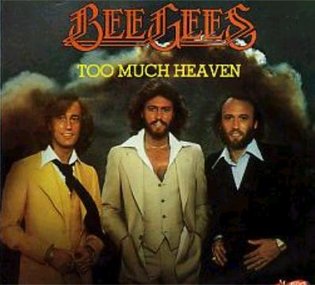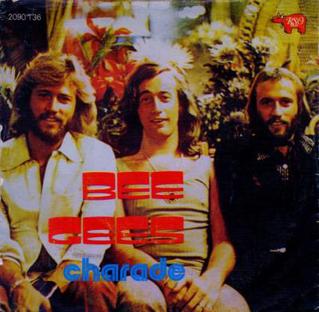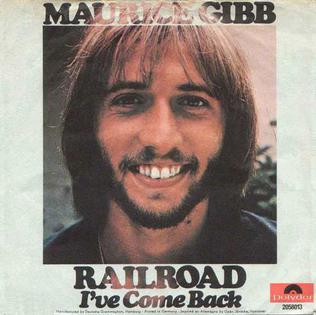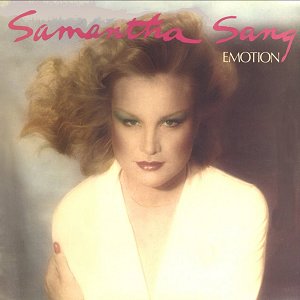Related Research Articles

The Bee Gees were a musical group formed in 1958 by brothers Barry, Robin, and Maurice Gibb. The trio were especially successful in popular music in the late 1960s and early 1970s, and later as prominent performers in the disco music era in the mid-to-late 1970s.

Sir Barry Alan Crompton Gibb is a British musician, singer, songwriter and record producer. Along with his younger brothers, Robin and Maurice, he rose to worldwide fame as a member of the Bee Gees, one of the most commercially successful groups in the history of popular music. Gibb is well known for his wide vocal range including a far-reaching high-pitched falsetto. Gibb's career has spanned over 60 years.

Cucumber Castle is the seventh studio album by the Bee Gees, released in April 1970. It was produced by Barry Gibb, Maurice Gibb, and Robert Stigwood. It consists of songs from their television special of the same name, which was named after a song on their 1967 album Bee Gees' 1st. Cucumber Castle is the only Bee Gees album not to feature any recorded contributions from Robin Gibb, as he had left the group before the album was recorded.

"Night Fever" is a song written and performed by the Bee Gees. It first appeared on the soundtrack to Saturday Night Fever on RSO Records. Producer Robert Stigwood wanted to call the film Saturday Night, but singer Robin Gibb expressed hesitation at the title. Stigwood liked the title Night Fever but was wary of marketing a movie with that name. The song bounded up the Billboard charts while the Bee Gees’ two previous hits from Saturday Night Fever soundtrack were still in the top ten. The record debuted on the Billboard Hot 100 Chart at #76, then leaped up 44 positions to #32. It then moved: 32–17–8–5–2–1. It remained at #1 for eight weeks, and ultimately spent 13 weeks in the top 10. For the first five weeks that "Night Fever" was at #1, "Stayin' Alive" was at #2. Also, for one week in March, Bee Gees related songs held five of the top positions on the Hot 100 chart, and four of the top five positions, with "Night Fever" at the top of the list. The B-side of "Night Fever" was a live version of "Down the Road" taken from the Bee Gees 1977 album, Here at Last... Bee Gees... Live.

"Jive Talkin'" is a song by the Bee Gees, released as a single in May 1975 by RSO Records. This was the lead single from the album Main Course and hit number one on the Billboard Hot 100; it also reached the top-five on the UK Singles Chart in the middle of 1975. Largely recognised as the group's comeback song, it was their first US top-10 hit since "How Can You Mend a Broken Heart" (1971).

"Too Much Heaven" is a song by the Bee Gees, which was the band's contribution to the "Music for UNICEF" fund. They performed it at the Music for UNICEF Concert on 9 January 1979. The song later found its way to the group's thirteenth original album, Spirits Having Flown. It hit No. 1 in both the US and Canada. In the United States, the song was the first single out of three from the album to interrupt a song's stay at #1. "Too Much Heaven" knocked "Le Freak" off the top spot for two weeks before "Le Freak" returned to #1 again. "Too Much Heaven" also rose to the top three in the UK. In the US, it would become the fourth of six consecutive No. 1s, equalling the record set by Bing Crosby, Elvis Presley, and the Beatles for the most consecutive No. 1 songs. The six Bee Gee songs are "How Deep Is Your Love", "Stayin' Alive", "Night Fever", "Too Much Heaven", "Tragedy" and "Love You Inside Out". The songs spanned the years of 1977, 1978 and 1979.

"Emotion" is a song written by Barry and Robin Gibb. It was first recorded by Australian singer Samantha Sang, whose version reached number three on the Billboard Hot 100 chart in 1978. The Bee Gees recorded their own version of the song in 1994 as part of an album called Love Songs, which was never released, but it was eventually included on their 2001 collection titled Their Greatest Hits: The Record. In 2001, "Emotion" was covered by the American R&B girl group Destiny's Child. Their version of the song was an international hit, reaching the top ten on the US Hot 100 chart and peaking in the top five on the UK Singles Chart. English singer Emma Bunton also covered the song on her 2019 album My Happy Place.

"How Deep Is Your Love" is a pop ballad written and recorded by the Bee Gees in 1977 and released as a single in September of that year. It was ultimately used as part of the soundtrack to the film Saturday Night Fever. It was a number-three hit in the United Kingdom and Australia. In the United States, it topped the Billboard Hot 100 on 25 December 1977 and stayed in the Top 10 for 17 weeks. It spent six weeks atop the US adult contemporary chart. It is listed at No. 27 on Billboard's All Time Top 100. Alongside "Stayin' Alive" and "Night Fever", it is one of the group's three tracks on the list. The song was covered by Take That for their 1996 Greatest Hits album, reaching No. 1 on the UK Singles Chart for three weeks.

"How Can You Mend a Broken Heart" is a song released by the Bee Gees in 1971. It was written by Barry and Robin Gibb and was the first single on the group's 1971 album Trafalgar. It was their first US No. 1 single and also reached No. 1 in Cashbox magazine for two weeks.

"Heartbreaker" is a song performed by American singer Dionne Warwick. It was written by Barry, Robin and Maurice Gibb of the Bee Gees for her 1982 studio album of the same name, while production was helmed by Barry Gibb, Albhy Galuten and Karl Richardson under their production moniker Gibb-Galuten-Richardson. Barry Gibb's backing vocal is heard on the chorus.

"First of May" is a song by the Bee Gees with lead vocals by Barry Gibb, released as a single from their 1969 double album Odessa. Its B-side was "Lamplight". It also featured as the B-side of "Melody Fair" when that song was released as a single in the Far East in 1971 as well as in 1976 and 1980 on RSO Records. It was the first Bee Gees single to be released after lead guitarist Vince Melouney had left the group.

"I Just Want to Be Your Everything" is a song recorded by Andy Gibb, initially released in April 1977 as the first single from his debut album Flowing Rivers. It reached number 1 on the Billboard Hot 100 for three weeks, starting on the week ending 30 July 1977, and again for the week ending 17 September 1977. It was Gibb's first single released in the United Kingdom and United States. His previous single, "Words and Music" was only released in Australia. It is ranked number 26 on Billboard's 55th anniversary All Time Top 100.

"Run to Me" is a song by the Bee Gees, the lead single from the group's album To Whom It May Concern (1972). The song reached the UK Top 10 and the US Top 20.
"Alive" is a ballad recorded by the Bee Gees for their album To Whom It May Concern. It was the second and last single from the album released on 10 November 1972 worldwide. The song was credited to Barry and Maurice Gibb and produced by the Gibbs and their manager Robert Stigwood.
"Love Me" is a song recorded by the Bee Gees, released on the 1976 album Children of the World. It was also included on the compilation albums Bee Gees Greatest and Love from the Bee Gees, which was released only in the UK.

"Charade" is a ballad written by Barry Gibb and Robin Gibb released in 1974 by the Bee Gees. It was the third and final single released from the Mr. Natural album. Like the parent album, the single was not a hit and only managed to climb to #31 on Billboard's Adult Contemporary chart in late 1974. It did reach the Top 10 in Chile, peaking at #7.

"(Our Love) Don't Throw It All Away" is a song penned by Barry Gibb and Blue Weaver and recorded by the Bee Gees in 1977 on the Saturday Night Fever sessions but was not released until Bee Gees Greatest (1979). A different version was released in September 1978 as the third single by Andy Gibb from his second studio album Shadow Dancing.

"Railroad" is the first solo single released by Maurice Gibb, best known as a member of the Bee Gees. It was released in April 1970. Like the Bee Gees' songs from 1967 to 1972, the single was released by Polydor in most parts of the world while in the US and Canada it was released by Atco. In Canada it was also released by Atlantic and Cotillion. Gibb did not release a follow-up single until 1984 when he released "Hold Her in Your Hand".

Emotion is the second album by Australian singer Samantha Sang, released in 1978. It features her biggest hit "Emotion" as well as her follow-up hit, "You Keep Me Dancin'".
Gibb-Galuten-Richardson were a British-American record producing team, consisting of Bee Gees founding member and British singer-songwriter Barry Gibb, American musician and songwriter Albhy Galuten and American sound engineer Karl Richardson. They produced albums and singles for Andy Gibb, Samantha Sang, Frankie Valli, Teri DeSario, Barbra Streisand, Dionne Warwick, Kenny Rogers, Dolly Parton and Diana Ross.
References
- ↑ "Family Notices". The Argus . No. 32, 738. Melbourne, Vic. 7 August 1951. p. 12. Retrieved 18 May 2024– via National Library of Australia.
- ↑ "Samantha Sang... and the World listened". About Samantha. Samantha Sang. Archived from the original on 19 July 2008. Retrieved 26 December 2010.
- ↑ "Off the Record". The Age Radio Supplement. No. 29318. Melbourne, Vic. 14 April 1949. p. 1. Retrieved 19 May 2024– via National Library of Australia.
- 1 2 "Emotion". Super Seventies RockSite. Retrieved 26 December 2010.
- ↑ "Little Girl Big Voice and Wardrobe". The Australian Women's Weekly . Vol. 34, no. 41. 8 March 1967. p. 75. Retrieved 19 May 2024– via National Library of Australia.
- 1 2 3 4 5 6 7 McFarlane, Ian (1999). "Encyclopedia entry for 'Samantha Sang'". Encyclopedia of Australian Rock and Pop . St Leonards, NSW: Allen & Unwin. ISBN 1-86508-072-1. Archived from the original on 26 June 2004. Retrieved 26 December 2010.
- ↑ Kimball, Duncan (2002). "Record Labels – HMV Records (Australia)". Milesago: Australasian Music and Popular Culture 1964–1975. Ice Productions. Retrieved 26 December 2010.
- ↑ Nimmervoll, Ed. "Go-Set search engine results for "Cheryl Gray"". Go-Set . Waverley Press. Retrieved 26 December 2010. Note: Go-Set published its national charts from October 1966 until August 1974.
- ↑ Kent, David Martin (September 2002). The place of Go-Set in rock and pop music culture in Australia, 1966 to 1974 (PDF) (MA). Canberra, ACT: University of Canberra. p. 256. Archived from the original (PDF) on 4 September 2015. Note: This PDF is 282 pages.
- ↑ ""Love of a Woman" at APRA search engine". Australasian Performing Right Association (APRA). Retrieved 26 December 2010.
- ↑ Brennan, Joseph. "Gibb Songs : 1969 : Samantha Sang". Columbia University . Retrieved 26 December 2010.
- ↑ ""Nothing in the World Like Love" at APRA search engine". Australasian Performing Right Association (APRA). Retrieved 26 December 2010.
- ↑ When love is gone [music] : theme from Bilitis / lyrics by Paul Evans & Bryan Wells ; music by Francis Lai. National Library of Australia. 1977. Retrieved 26 December 2010.
{{cite book}}:|work=ignored (help) - 1 2 "Samantha Sang > Charts & Awards > Billboard Singles". Allmusic (Rovi Corporation). Retrieved 26 December 2010.
- 1 2 "RIAA Certifications". Recording Industry Association of America . Retrieved 26 December 2010.
- ↑ Roberts, David (2006). British Hit Singles & Albums (19th ed.). London: Guinness World Records Limited. ISBN 1-904994-10-5.
- ↑ Kent, David (1993). Australian Chart Book 1970–1992 . St Ives, NSW: Australian Chart Book Ltd. ISBN 0-646-11917-6. Note: Used for Australian Singles and Albums charting from 1974 until ARIA created their own charts in mid-1988. In 1992, Kent back calculated chart positions for 1970–1974.
- ↑ "Samantha Sang > Charts & Awards > Billboard Albums". Allmusic (Rovi Corporation). Retrieved 26 December 2010.
- ↑ [Joel Whitburn's Top Pop Singles 1955–2002]
- ↑ "NZ Top 40 Singles Chart | The Official New Zealand Music Chart". Nztop40.co.nz. 13 August 1978. Retrieved 13 October 2016.
- ↑ "Image : RPM Weekly - Library and Archives Canada". Library and Archives Canada . Archived from the original on 28 October 2016.
- 1 2 Kent, David (1993). Australian Chart Book 1970–1992 (illustrated ed.). St Ives, N.S.W.: Australian Chart Book. p. 164. ISBN 0-646-11917-6.
- ↑ Roberts, David, ed. (2006) [1977]. British Hit Singles & Albums (19th ed.). London: Guinness World Records. p. 19. ISBN 1-904994-10-5.
- ↑ "Samantha Sang - Billboard". Billboard .
- ↑ "Cashbox Magazine" (PDF). Billboard . 10 December 1977. p. 10. Retrieved 10 November 2021– via World Radio History.
- ↑ "Australian Music Awards". Ron Jeff. Retrieved 16 December 2010.